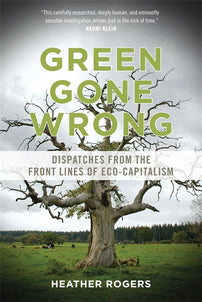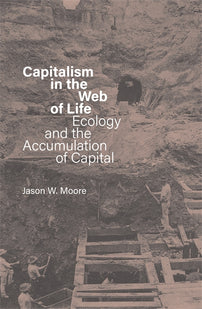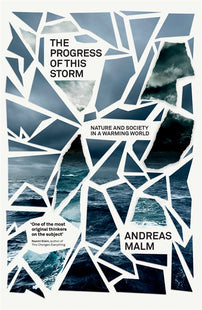Building a “Green New Deal”: Lessons From the Original New Deal
Demands centering on the need for a "Green New Deal", focused on the creation of a public works “green jobs” infrastructure policy, have helped energise the American left in recent weeks. In this article Matt Huber offers four vital lessons from the original New Deal that contemporary activists and policymakers must learn.

The climate left has coalesced around a powerful rallying cry —the need for a “Green New Deal.” The sit-in at Nancy Pelosi’s office this week organized by the Sunrise Movement and Justice Democrats , joined by Alexandria Ocasio Cortez , focused their demands on a new committee that could work toward bringing this Green New Deal to fruition. This program demands a plan for economy-wide decarbonization that moves toward 100% renewable energy. This would be achieved through a public works “green jobs” infrastructure policy that would include “a job guarantee program to assure a living wage job to every person who wants one.” As such, the Green New Deal represents the clearest effort yet to forge a politics that takes on climate change and inequality simultaneously. Is it possible? To make it possible, the climate left could learn a lot by revisiting the conditions and politics that underwrote the original New Deal. The obvious condition was, of course, the ‘crisis’ of the Great Depression. Climate change already provides us with this (albeit different) sense of ‘crisis’ (the horrific California fires only the latest example). The key to the New Deal was how ‘crisis’ was channeled into broad and popular mass demands. Here are four key additional factors.
1. The New Deal was made through mass working class protest and revolt
Although we often imagine the landmark labor and welfare state policies were granted down through the benevolence of Franklin D. Roosevelt, policies like the National Labor Relations Act and the Social Security Act only followed massive social protest and revolt. As labor historian Irving Bernstein describes, “In 1934 labor erupted. There were 1856 work stoppages involving 1,470,000 workers, by far the highest count…in many years.” Strikes shut down auto factories in Toledo; longshoreman and teamsters organized a four day general strike in San Francisco effectively shutting down the city. As Frances Fox Piven and Richard Cloward detail, “unemployed councils” used disruptive action to demand improvements in poor relief eventually leading to the modern welfare state.
The lesson here is that entrenched systems of power only bend under tremendous political pressure from below. The focus on a sit-in and disruption in Pelosi office (and later Frank Pallone’s) is an excellent start. But, the electoral and legislative orientation of this disruption should be the tip of the iceberg of a larger movement of direct action and disruptive politics. As Naomi Klein has demonstrated so well, the climate movement already deploys this through the “Blockadia” movement attempting to use direct action to prevent the expansion of pipelines, coal fired power plants, and other fossil fuel infrastructure.
Yet, the New Deal was made by a more generalized revolt of the working class. Socialists understand that because of their presence at the core of production and profit, the working class has special power to bring capitalism to a standstill. While the climate movement lately has done an good job reaching out to marginalized communities of color and connecting environmental and climate justice struggles, they remain a movement largely made up of the professional classes (college-educated journalists, scientists, radical academics, tech workers, etc.) distant from the larger “multiracial working class” (as Matt Karp just put it). If anything, parts of the labor movement have often been at odds with climate activist tactics of disruption and blockades. The climate movement should reach out to already growing militancy within labor: the 2015 United Steelworkers strike in the refinery sector is a climate issue. Care-based jobs like nursing and teaching are not only low carbon (as Alyssa Battistoni shows), but also important centers of rising labor militancy. Building the climate movement that appeals to the needs of the working class can make two basic arguments: (1) It is the working class as a whole who has and will continue to suffer the worst consequences of climate change. Kim and Kanye can hire private firefighters when their house is in peril, but the working class has no such option. (2) Climate solutions must be framed in ways that make clear how they will directly improve the lives of the working class as a whole (just like New Deal policies did — more on this below).
2. The New Deal was built on an antagonistic politics of wealth redistribution from the rich
In a famous 1936 speech, FDR put his class allegiances in stark terms by arguing the rich business and financial interests, “…are unanimous in their hate for me — and I welcome their hatred.” Why did they hate him? Among many reasons, in the previous year he helped pass “The Revenue Act of 1935” which massively raised taxes on the rich (as high as 75% on the highest brackets — these rates would only go up in future years) and included a large “Wealth Tax.” This money came in handy in building public sector-led programs — the Works Progress Administration, Federal arts projects, Social Security and all the rest — that so characterize the New Deal era. These programs were funded by class antagonism.
Tax policy is central to the climate movement. But, as I have said before, we do not need to tax molecules, we need to tax the rich. Insofar as it is the rich capitalists who disproportionately benefit from carbon, a carbon tax could achieve this to some extent. But, carbon isn’t a class enemy; it is something all of us use (allowing forces on the right to argue such a tax will cost you — more on this below). Moreover, framing it as “carbon” already assumes the mass public understands the role of carbon dioxide in generating a highly abstract process called the greenhouse effect (if the US education system were better funded by taxing the rich maybe this would be so). Like FDR, we need a rhetorical way to make the class antagonisms clearer. Why not call it, like Cynthia Nixon did in her NY gubernatorial campaign, a “Corporate Polluter Tax”, or a “Fossil Fuel Industry Tax.” A New Deal-esque tax policy must be based on a premise: we need to tax them, to fund us. This is what Bernie Sanders called for by proposing a “Wall Street Tax” to fund “College for All.” This is what the West Virginia teachers strike did by calling for higher taxes on the fossil fuel industry to fund better salaries and health care for working class teachers.
While the climate movement has done a great job naming the enemy of the fossil fuel industry, the truth is climate change is actually caused by the rich capitalist class as a whole. Thus, in reality, climate change probably won’t be solved by some “special” climate-focused tax on only one industry or sector. It must be based on taxing the rich in general. Building the kind of transformations the IPCC says are required will take a whole lot of public revenue that can only be funded through a large scale politics of wealth redistribution. They might hate us for it too. But, we should welcome their hatred (because they put us in this hot mess!)
3. The New Deal was very popular
There are bars where I live in Syracuse, NY were FDR’s picture still hangs on the wall. In 1936, FDR’s broad economic populist program destroyed his opposition by nearly 25 percentage points winning every state except Maine and Vermont (WTF, Vermont?!). His campaign also raised voter turnout by 4.1 percentage points to its highest level in 20 years. I would guess much of this turnout was coming from the working classes emboldened by their militant strike activity actually leading to huge victories in 1935. By providing jobs to the unemployed, welfare to the disabled and retired, and infrastructure everywhere, the New Deal revived a sense that the government and public sector could actually serve the mass of the people.
It’s almost as if the climate movement has tried everything, except policies that might appeal to the vast majority of people. What if climate policy was popular? Despite heroic organizing with a progressive coalition and focus on environmental justice, a Carbon Fee referendum just failed in Washington State (again) by a large 13 point margin. The problem is climate policies are often designed by and for the professional class. They are meant to be “smart” and “logical” by channeling incentives to change behavior and producing desired outcomes. The worst forms also seek “compromise” and “bipartisanship” based in a naive belief that if smart people really just understood the science of climate change they would change their policy positions. A policy like cap and trade or a revenue neutral carbon fee and dividend are so dizzyingly complex it is difficult to explain to the average working person how exactly it will improve their lives (even the talk of a ‘dividend check’ sounds vaguely like a complex mutual fund investment). And, again, many people probably don’t even understand why “carbon” is part of this policy at all (or, for example, what the number 350 means). This is why the policies surrounding a “Green New Deal” are so exciting — “Green Jobs for All!” emblazoned the signs in the Pelosi sit-in. People understand jobs are good (that is probably why every politician in history claims they will deliver jobs and anti-environmental forces consistently argue environmental protection will cost jobs). A green jobs program could finally cut through the jobs vs. environment debate that has hobbled environmental politics for decades. Like “Medicare for All”, the climate movement is finally waking up to the fact that their policies must communicate clear and simple benefits that appeal to the mass of working people. These kinds of popular policies can help build a bigger base among the working class majority, turnout more voters than just suburban liberals, and create the conditions for a new left power bloc.
4. The New Deal brought energy to the people
The Rural Electrification Administration, rural electric cooperatives, the Tennessee Valley Authority, and countless other programs were premised on delivering energy to people who needed it. (well, also industries who needed it, but lets bracket that for now). They built out power lines to poor rural communities. They built dams to deliver cheap electricity to entire regions. Amazingly, they even hired Woody Guthrie to sing songs about Columbia River doing work for the people (“‘Roll along, Columbia, you can ramble to the sea, But river, while you’re rambling, you can do some work for me.”) Can we imagine Bob Dylan singing such a song about the carbon fee and dividend?
What if a mass climate program aimed to deliver (and, dare I say, decommodify) energy rather than just price it differently? Much climate policy is premised on the idea of making fossil fuel energy cost more so as to make renewables more competitive. As such, the Koch brothers and the anti-climate populism of the right have effectively staved off climate action by one simple argument: climate policy will cost you. As much as we focus on how these forces deny climate science, the most popular reasoning the right uses to stall climate action is that it will “cost” the economy, jobs, and your family. This is the reasoning for George W. Bush pulling out of Kyoto, and Trump pulling out of Paris. This is natural since much liberal climate policy is framed on this idea that external “costs” (or externalities as economists put it) need to be internalized into markets and prices. As much as we try to explain a carbon fee won’t cost poor working families, the very language of fees, taxes, and caps does not communicate this well at all.
Like the New Deal, we need to build a Green New Deal based on delivering energy to people. The fact is that building a renewable energy economy will take massive public works projects to create new transmission lines, new storage systems, and new large scale solar and wind capacities (this is where “Green Jobs for All” comes in). If delivered by the public sector, renewables also have the material capacity to deliver free and inexhaustible power. This kind of public works energy build out could be “sold” to the public as delivering what the majority of working people actually need: cheaper or free energy (notice how this flips the standard logic: instead bankrupting the fossil fuel sector by making them cost more, we can do the same by making renewables cost less). Cheaper or no electricity bills is not hard to explain to the average person (even if this person doesn’t quite understand the greenhouse effect). Moreover, like the New Deal, a large, public-sector led green infrastructure program would bring climate solutions to local communities where everyday people would see new jobs and new energy systems tangibly improving their lives. This is what the Green New Deal could look like.
—
There are reasons to be wary about a New Deal-style politics for ecological and political reasons. It was social democracy based in the imperial core of the world economy. Its ultimate goal was to save capitalism and revive ‘growth.’ It was exclusionary on the basis of race and gender. Yet, if the IPCC says we have 12 years to massively transform our economy, there is perhaps no better historical example than the period from 1933–1945. During this short period, housing policy was reconfigured to completely change patterns of residential settlement. Capital-labor relations were renegotiated giving labor the power to form unions and collectively bargain for the first time in history. The Federal role in building public infrastructure was solidified and only grew. By the end of this period, the government actually took over most of the economy — building massive chemical, aluminum and other kinds of factories needed for the war. As many climate activists have argued, we need a similar World War II-like mobilization that completely shifts material production with the single-minded goal: not war this time, but decarbonization. But, this WWII analogy forgets the social and political transformations of the New Deal that came before. It is not clear society as a whole will view climate change as a “threat” akin to the Nazis tomorrow. But, the New Deal shows how a broad working class politics that appeals to peoples’ basic needs and antagonizes the rich could build the kind of mass movement needed to implement the changes science says are necessary.
Matt Huber is Associate Professor of Geography at Syracuse University and is a member of the Democratic Socialists of America
[book-strip index="1" style="display"]


